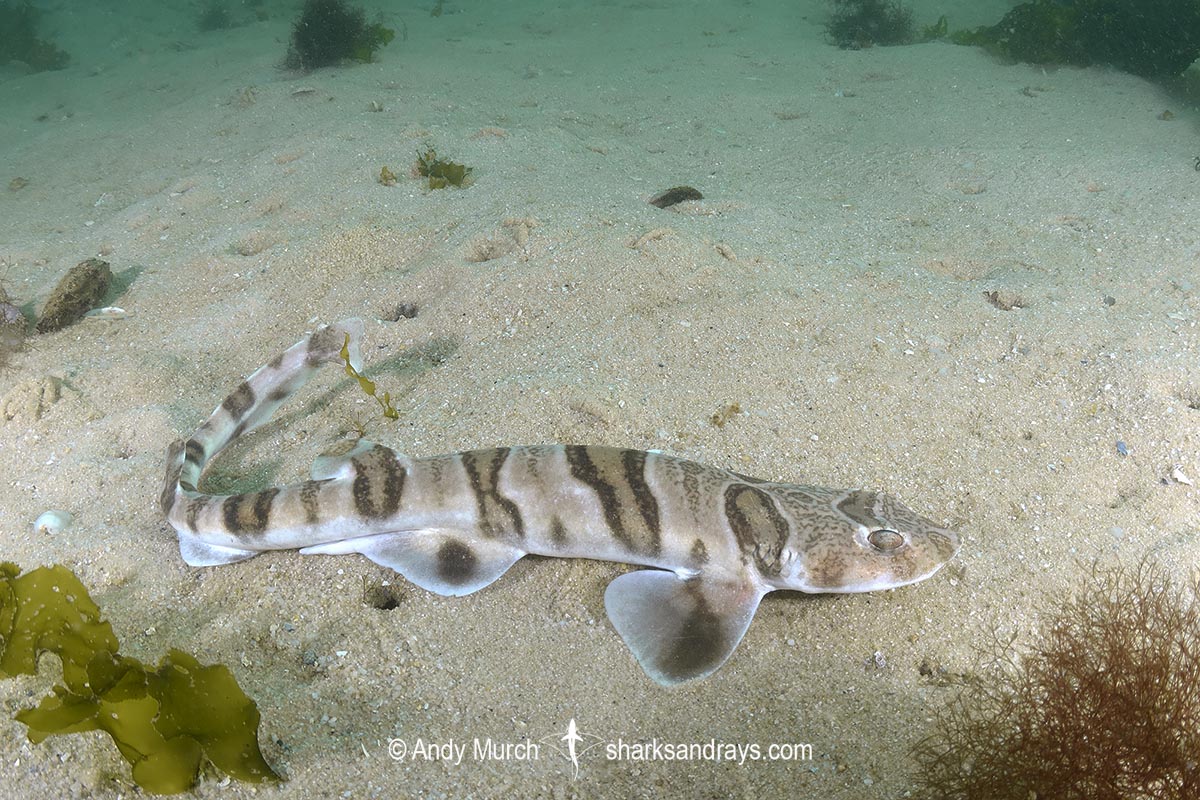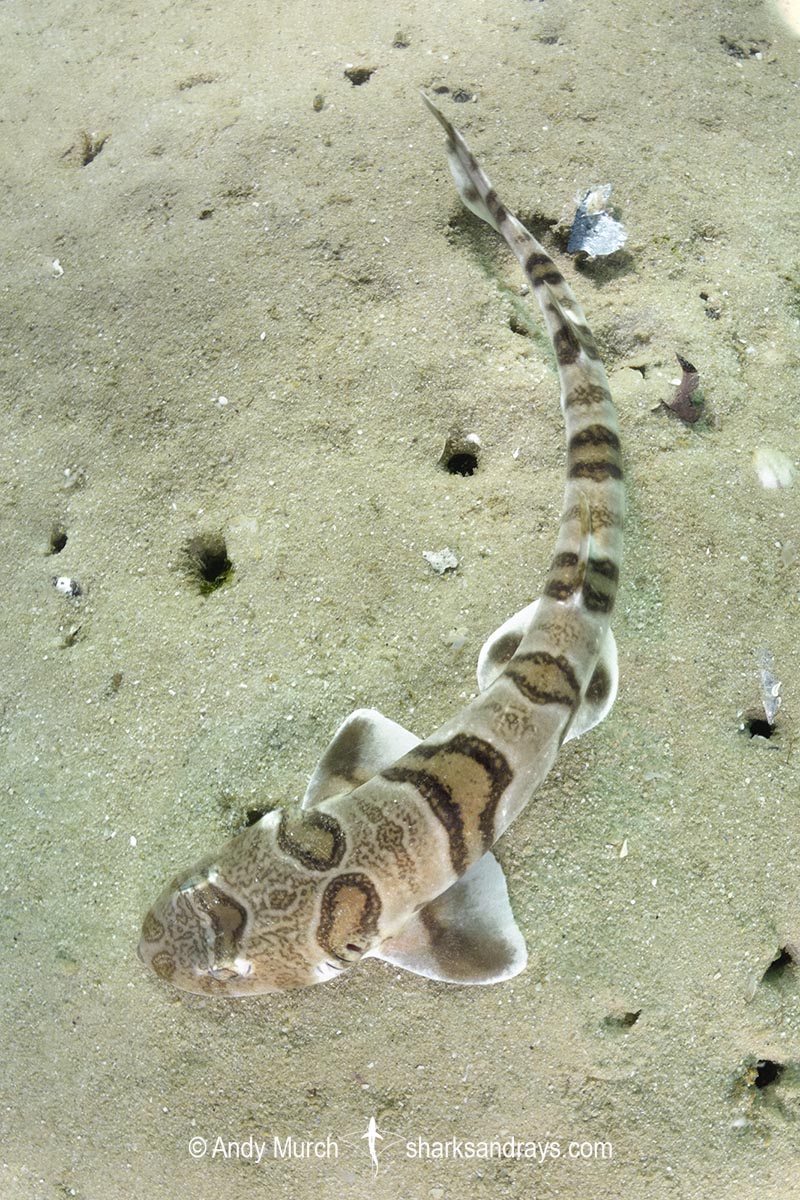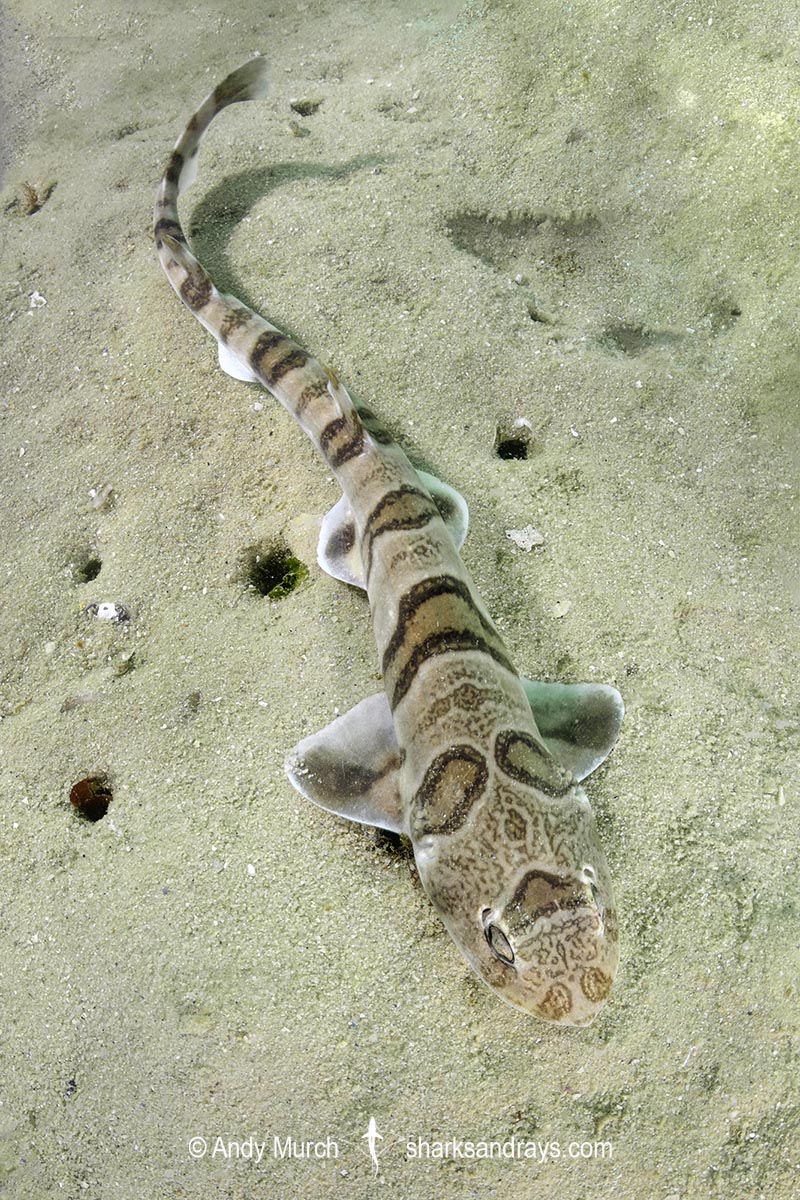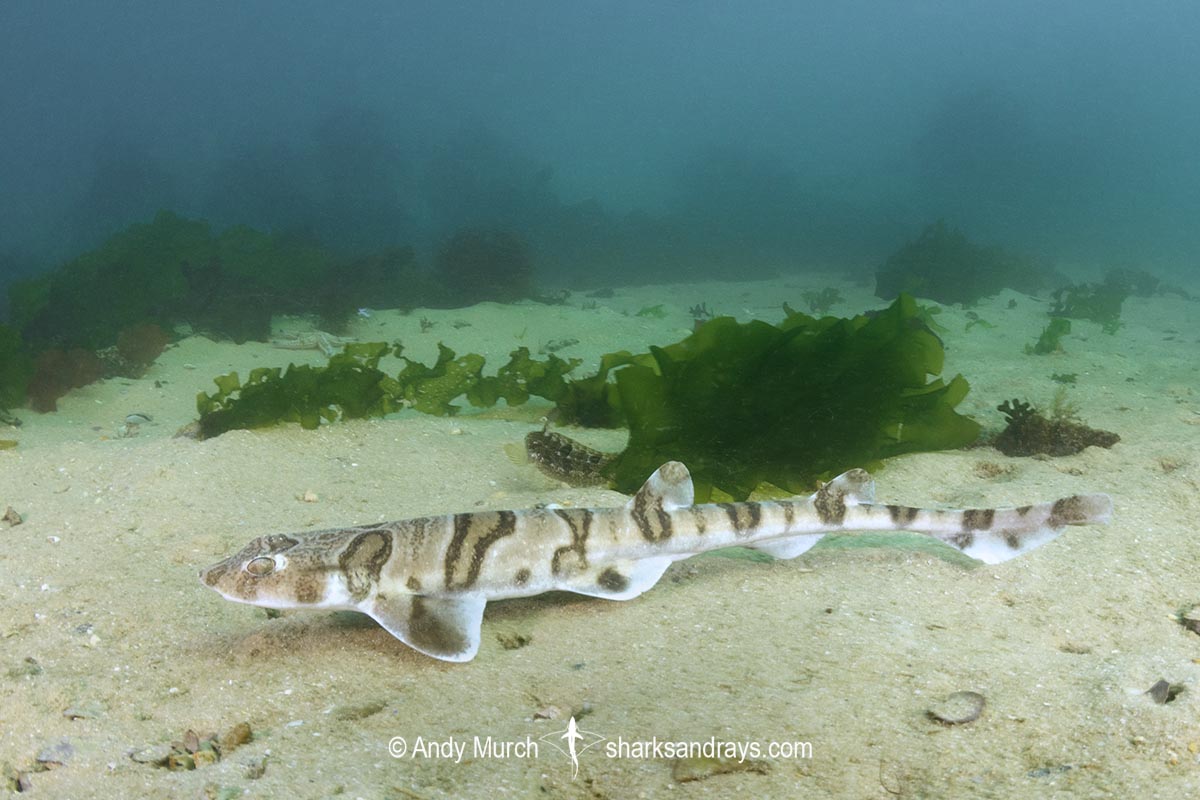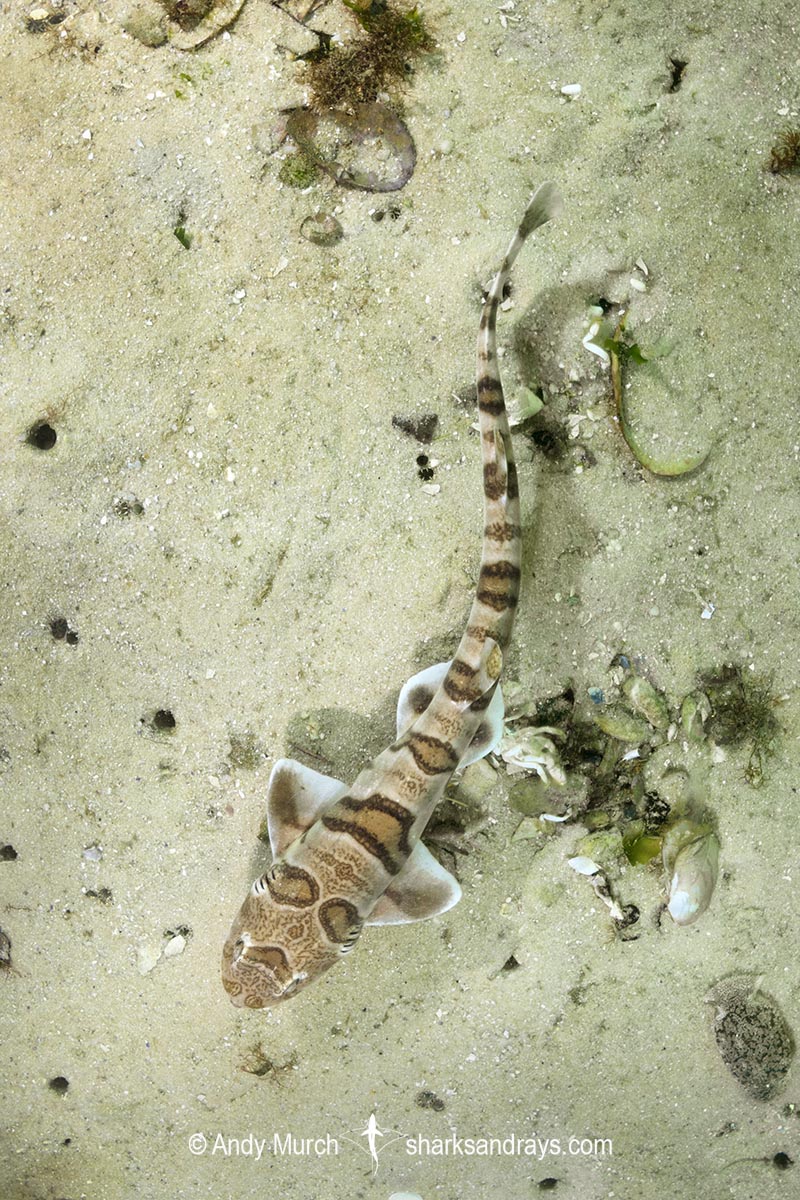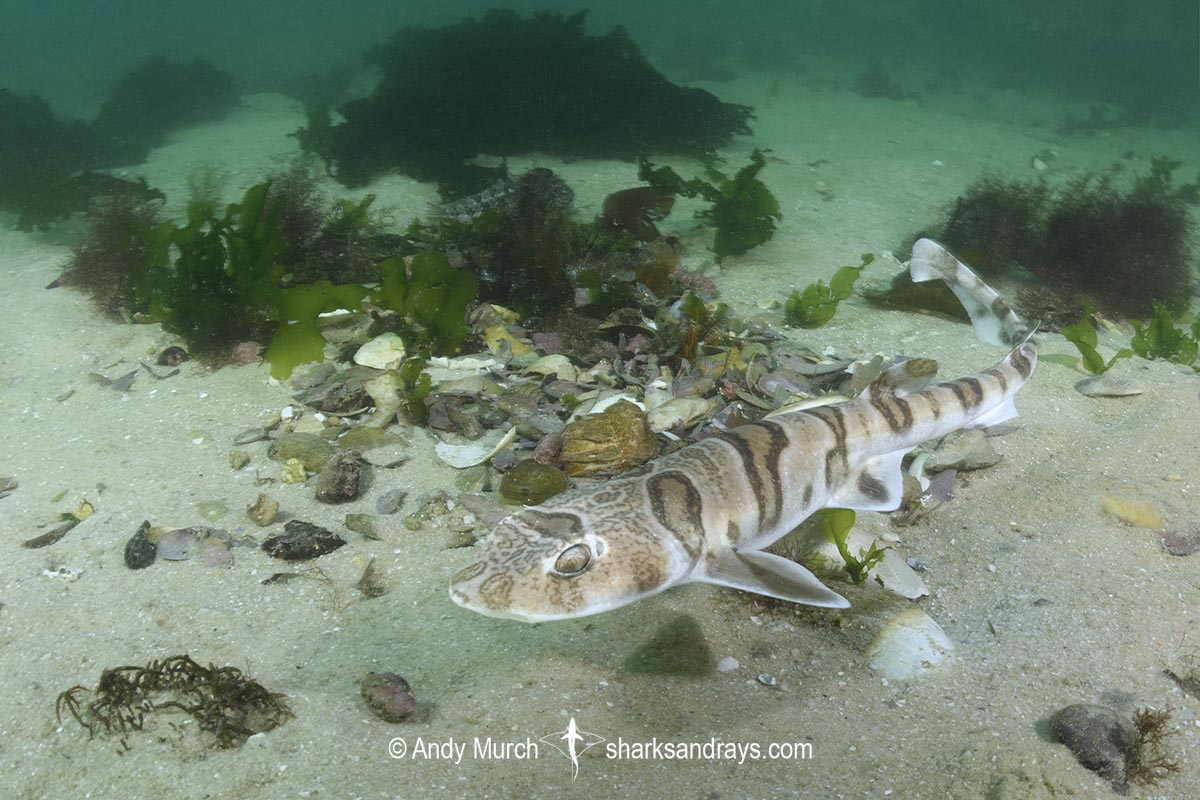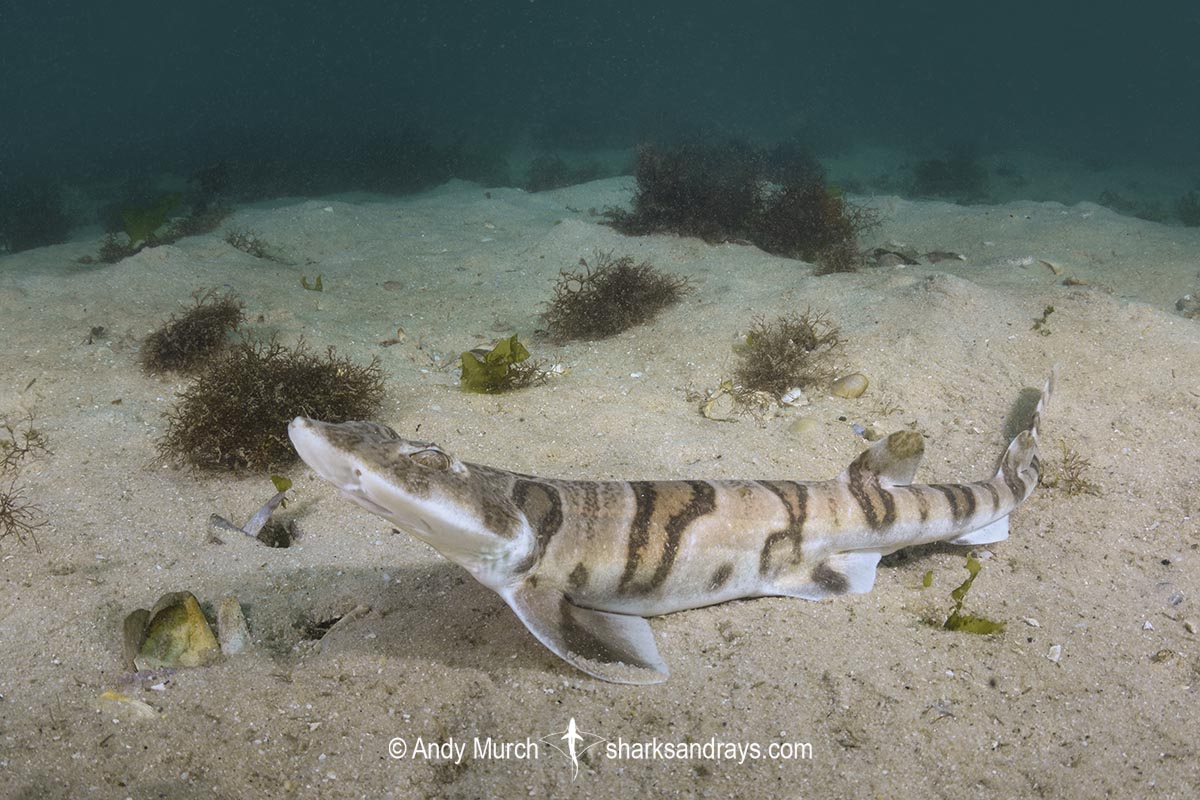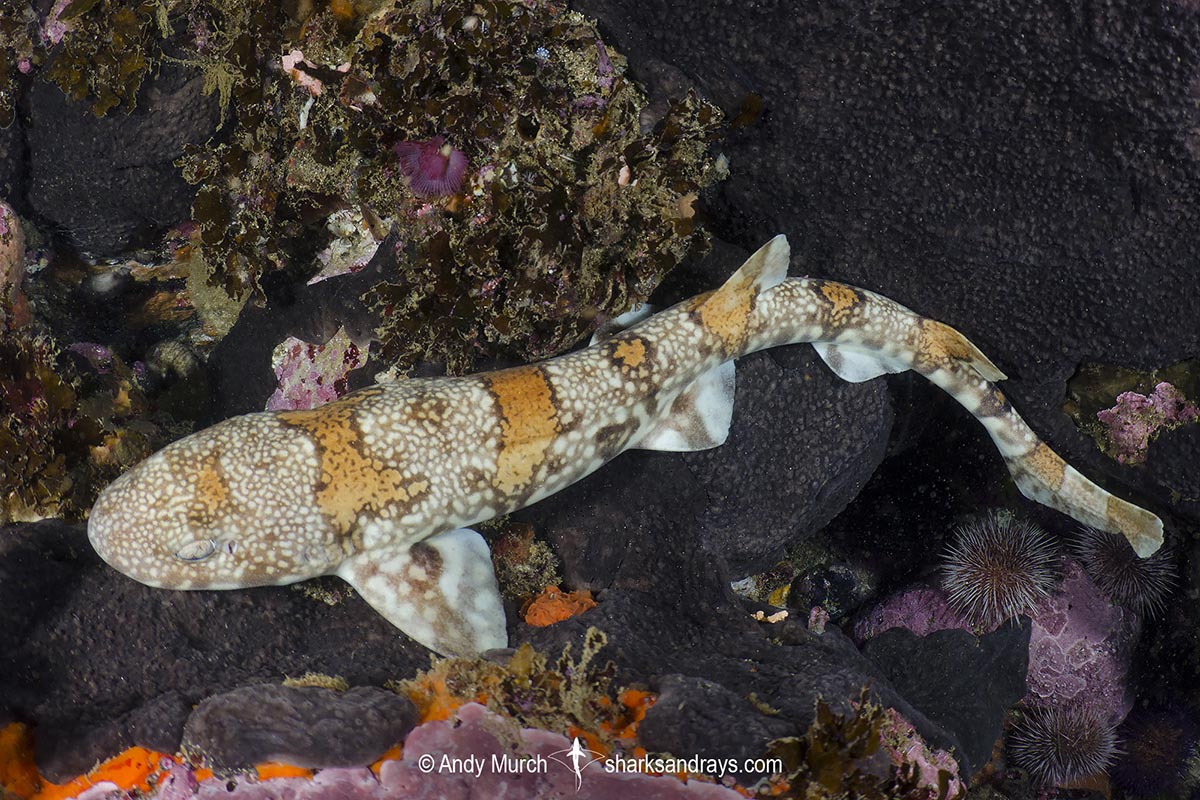Common names
Tiger Catshark.
Binomial
Halaelurus natalensis.
Synonyms
Scyllium natalense.
Identification
Slender body. Head broad. Snout dorsally compressed with upturned tip. Eyes/brows raised slightly above head. Mouth width greater than snout length. Labial furrows short. First dorsal origin over pelvic fin insertion. Second dorsal fin origin anterior to anal fin insertion. Pectoral fins broad. Anal fin fairly long. Lower caudal lobe weakly defined. Dorsal coloration uniformly cream/tan with ten dark saddles but no spots. Saddles have white/pale borders and reddish brown centres. Second saddle (behind eyes) is not joined at the top.
Size
Maximum length at least 50cm. Size at birth unknown.
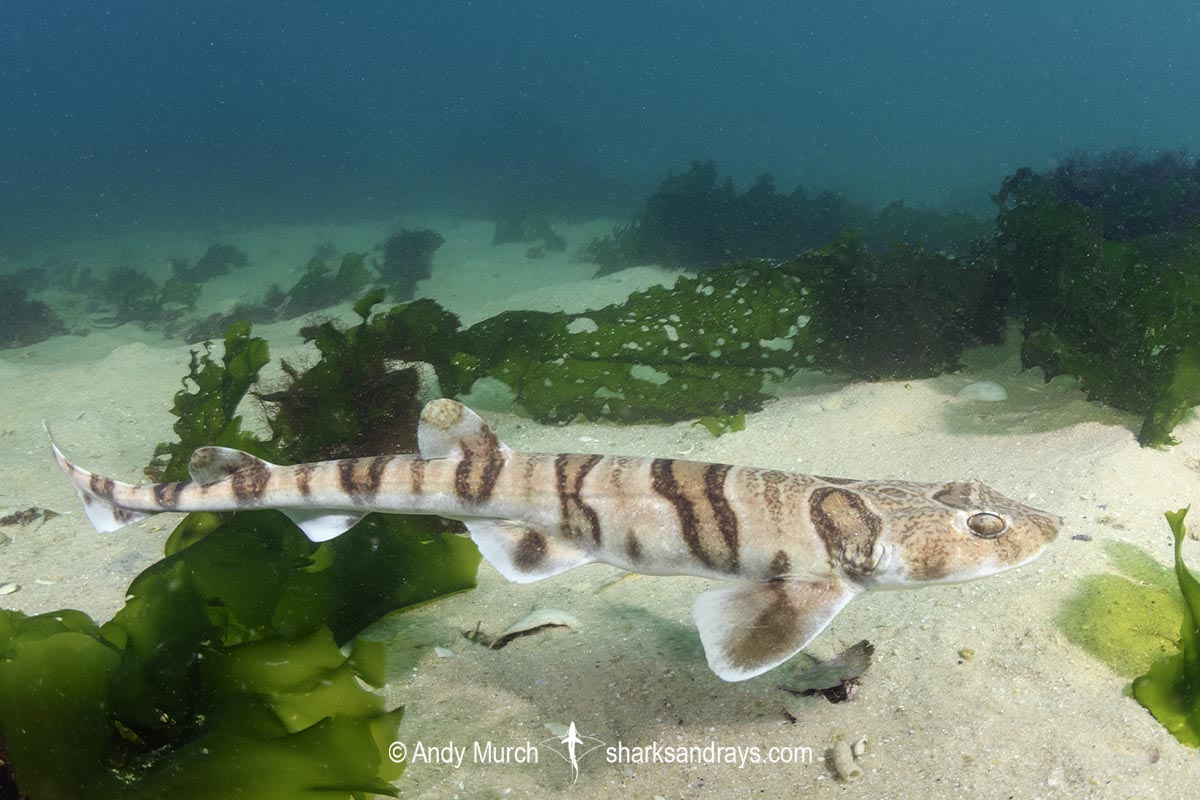
Conservation Status
VULNERABLE
Although not directly targeted, the Tiger Catshark (Halaelurus natalensis) occurs over open sand in areas of intensive trawl fisheries. It is estimated that Tiger Catshark populations have been reduced by 30–49% over the last 45 years.
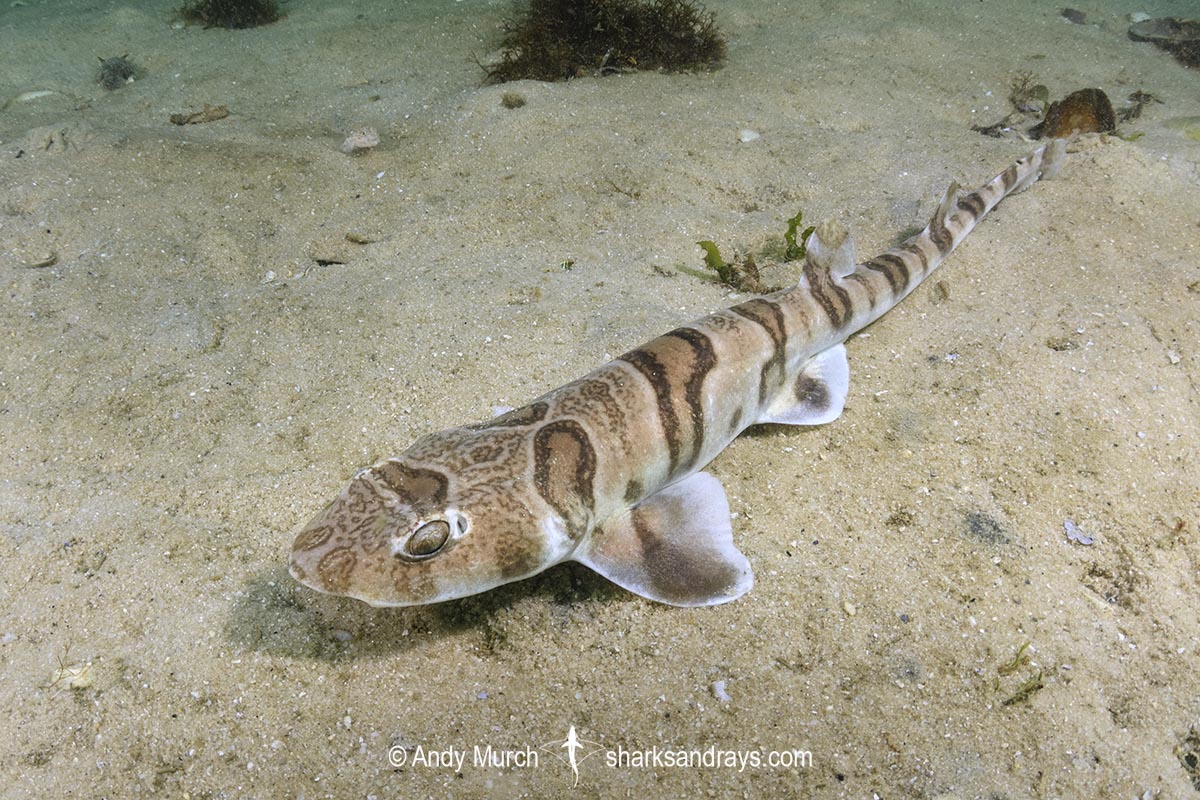
Habitat
A temperate water species inhabiting rocky and sandy substrates on the continental shelf. From shallow bays to at least 114m. Usually shallow. Stays close to the seafloor.
Distribution
The tiger catshark is confined to southeast coast of Africa. Found from False Bay eastwards to Southern Mozambique.
Reproduction
Oviparous. 6-11 egg cases per oviduct. Egg case size approximately 4cm x 1.5cm.
Diet
The tiger catshark feeds on small bony fishes, crustaceans, polychaete worms, cephalopods and small elasmobranchs.
Behavior
Poorly known. Rarely seen in kelp forests in False Bay, unlike other catshark species. Probably prefers open ground.
Reaction to divers
Rarely encountered by divers. Probably shy in un-baited situations. Fairly easy to approach on baited dives.
Diving logistics
Tiger Catsharks are occasionally seen by local divers in False Bay and at a few dive sites further east in southern South Africa. Very rarely seen on baited catshark dives in the kelp forest.
Baiting on open ground in False Bay is a good way to see this species but even then, sightings are hit and miss.
PLEASE NOTE: There are inherent risks in using bait to attract sharks on open ground (outside of the kelp forest) in white shark territory.
Similar species
Lined Catshark Distinguished by a greater amount of thinner saddles and small dark spots.
Puffadder Shyshark Distinguished by a more rounded bulbous head and more intricate markings with many light and dark spots.

